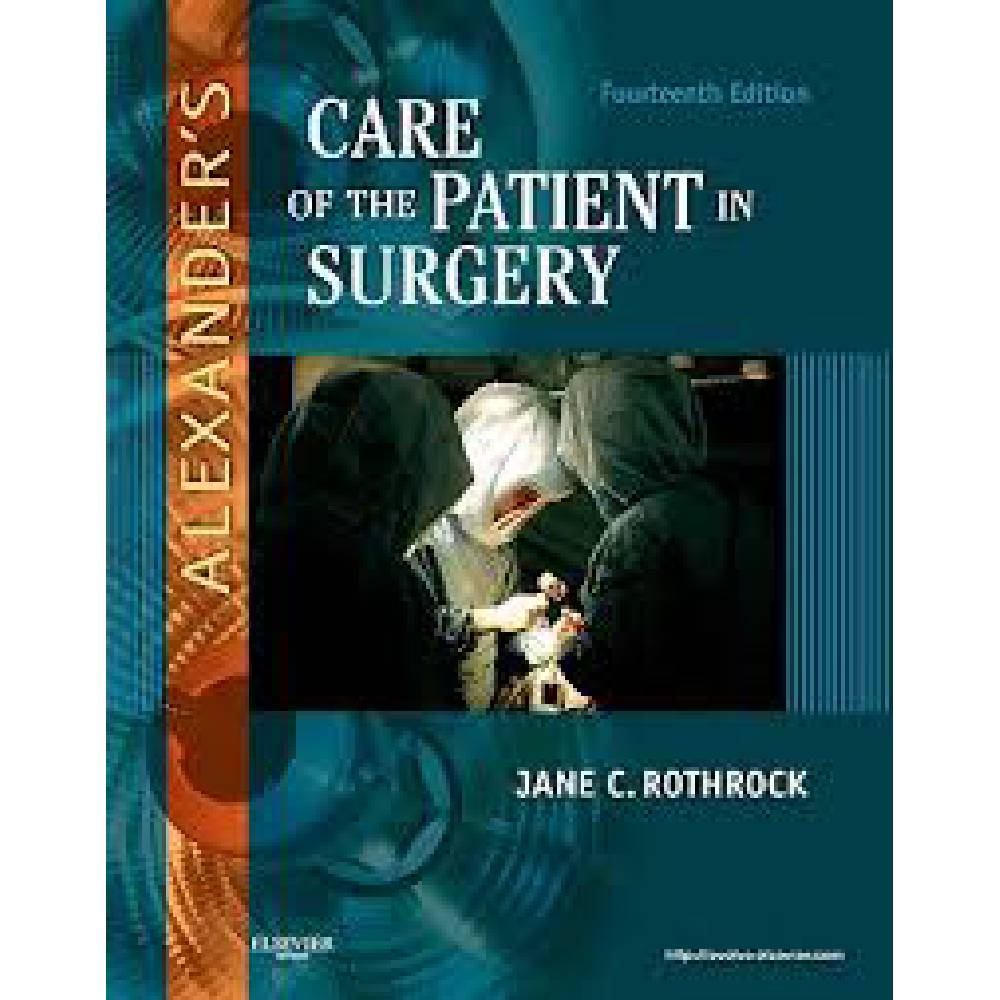Alexanders Care Of The Patient In Surgery 14th Edition By Rothrock – Test Bank
$55.00
Alexanders Care Of The Patient In Surgery 14th Edition By Rothrock – Test Bank
You will receive this product within 24 hours after placing the order
Alexanders Care Of The Patient In Surgery 14th Edition By Rothrock – Test Bank
Chapter 11: Surgery of the Liver, Biliary Tract, Pancreas, and Spleen
Test Bank
MULTIPLE CHOICE
1. The liver, pancreas, and spleen share many similarities. Select the statement about these organs that is true.
a. All three are solid organs and very vascular.
b. All three are metabolic organs.
c. All three organs have terminal attachments to the duodenum.
d. All of the options are false.
ANS: A
All three organs are solid (not hollow or collapsible) organs. A pathologic condition in the liver, biliary tract, pancreas, or spleen often requires surgical intervention. These organs are highly vascular and control many metabolic and immune functions of the body.
REF: Pages 357-361
2. The functional units of the liver are the lobules. The functional cells of the liver are the ______________ and they manufacture _______________.
a. Kupffer cells; phagocytes
b. sinusoid cells; lymphocytes
c. hepatocytes; bile
d. portal triad cells; ductal epithelium
ANS: C
Lobules are the functional units of the liver. Each lobule contains a portal triad that consists of a hepatic duct, a hepatic portal vein branch, and a branch of the hepatic artery, nerves, and lymphatics. The hepatic cords consist of numerous columns of hepatocytes—the functional cells of the liver. The hepatic sinusoids are the blood channels that communicate among the columns of hepatocytes. The sinusoids have a thin epithelial lining composed primarily of Kupffer cells—phagocytic cells that engulf bacteria and toxins. Bile is manufactured by the hepatocytes.
REF: Page 357
3. The liver is essential in the metabolism of carbohydrates, proteins, and fats, generating nutrient stores of which substance that supplies energy sources to the brain and body?
a. Carbohydrate glucose substrate
b. Glycogen
c. Serum glucosamine
d. Bile salts
ANS: B
The liver is essential in the metabolism of carbohydrates, proteins, and fats. It metabolizes nutrients into stores of glycogen, used for regulation of blood glucose levels and as energy sources for the brain and body functions.
REF: Pages 357-358
4. The biliary system (also called the biliary tree) drains bile from the gallbladder to the ampulla of Vater. The primary function of the gallbladder is to:
a. manufacture bile.
b. convert bile salts into bile enzymes.
c. store and concentrate bile.
d. contract to secrete bile into the hepatic duct.
ANS: C
The gallbladder, which lies in a sulcus on the undersurface of the right lobe of the liver, terminates in the cystic duct (Figure 11-3). This ductal system provides a channel for the flow of bile to the gallbladder, where it becomes highly concentrated during storage. The liver produces about 600 to 1000 ml of bile each day. The gallbladder’s average storage capacity is 40 to 70 ml. As the musculature of the gallbladder contracts, bile is forced into the cystic duct and through the common duct. As the sphincter of Oddi in the ampulla of Vater relaxes, bile is released, flowing into the duodenum to aid in digestion by emulsification of fats.
REF: Page 359
5. The head of the pancreas is fixed to the:
a. spleen.
b. duodenum.
c. stomach.
d. biliary tree
ANS: B
The pancreas (see Figure 11-3) is a fixed structure lying transversely behind the stomach in the upper abdomen. The head of the pancreas is fixed to the curve of the duodenum.
REF: Pages 359-360
6. While the pancreas’ function is carbohydrate metabolism with the production of insulin and digestive enzymes, the spleen’s function is primarily ___________ with the production of _______________.
a. immunologic; leukocytes
b. metabolic; granulocytes
c. anabolic; plasma cells
d. as a blood reservoir; phagocytes
ANS: A
The spleen has many functions. Among them are defense of the body by phagocytosis of microorganisms, formation of nongranular leukocytes and plasma cells, and phagocytosis of damaged red blood cells. It also acts as a blood reservoir. The pancreas contains groups of cells, called islets, or islands, of Langerhans, that secrete hormones into the blood capillaries instead of into the duct. These hormones are insulin and glucagon, and both are involved in carbohydrate metabolism.
REF: Pages 360-361
7. An example of an indication for liver transplantation would be:
a. end-stage liver disease resulting from advanced hepatic cancer with metastasis.
b. acute fulminant biliary disease of unknown origin.
c. infection caused by untreated cystic anomalies.
d. primary hepatic cancer.
ANS: D
Liver transplantation is indicated for patients with primary hepatic cancer, chronic hepatocellular disease, chronic cholestatic disease, metabolic liver disease, acute fulminant liver disease, and inborn errors of metabolism. When malignancies are the cause of end-stage liver disease, the right upper quadrant may be radiated intraoperatively—after hepatectomy and before transplantation.
REF: Page 390
8. Matthew Ryan, a 9-year-old boy, is admitted to the emergency department for a sledding accident, when he lost control of his sled and crashed into a tree. He is pale and in pain; his abdomen is tender and firm to palpation. The CT scan suggests rupture of the spleen with internal bleeding. Matthew’s scheduled surgery will most probably be a(n):
a. laparoscopic splenic resection with sutured mesh overlay.
b. open splenic lobectomy with vascular ligation.
c. open total splenectomy.
d. open splenic repair with sutured anastomosis and argon plasma coagulation vessel sealing.
ANS: C
Splenectomy is removal of the spleen. It is performed for multiple reasons, including trauma to the spleen. Contraindications to laparoscopic splenectomy include severe portal hypertension, uncorrectable coagulopathy, severe ascites, extreme splenomegaly, extensive adhesions, and most traumatic injuries to the spleen. For these patients, an open approach is indicated.
REF: Page 393
9. The Whipple procedure is the removal of the head of the pancreas, the entire duodenum, a portion of the jejunum, the distal third of the stomach, and the ____________ as a surgical treatment for____________.
a. left lobe of the liver; metastatic hepatocytoma
b. distal segment of the spleen; pancreatic metastasis
c. inferior margin of the ligament of Treitz; pancreatic cancer
d. lower half of the common bile duct; pancreatic cancer
ANS: D
Pancreaticoduodenectomy (Whipple procedure) is the removal of the head of the pancreas, the entire duodenum, a portion of the jejunum, the distal third of the stomach, and the lower half of the common bile duct, with reestablishment of continuity of the biliary, pancreatic, and GI tract systems.
REF: Page 384
10. Open common bile duct (CBD) exploration may be indicated in some cases where:
a. the patient has undergone prior biliary surgery.
b. a positive cholangiogram shows a CBD obstruction during an open cholecystectomy.
c. laparoscopy technology is not available.
d. All of the options are correct.
ANS: D
With the advent of endoscopic, percutaneous, and laparoscopic techniques (Figure 11-13), open exploration of the common bile duct is rarely performed. When these newer methods are not available, when they are not possible because of prior surgery, or when an open procedure is otherwise necessary, open common bile duct exploration is performed.
REF: Page 378











Reviews
There are no reviews yet.